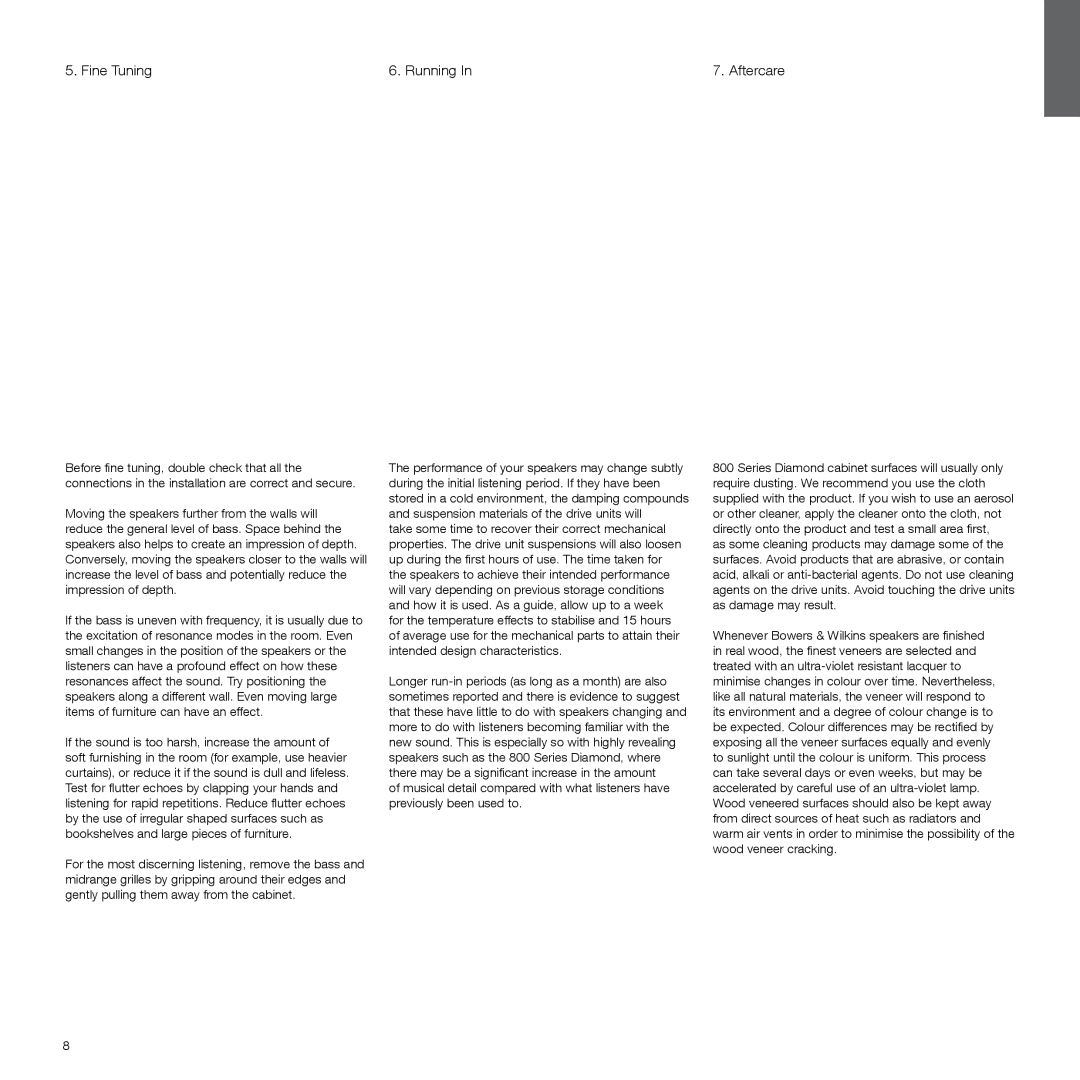800, 802 specifications
The Bowers & Wilkins 802 D4 is a pinnacle of high-fidelity sound reproduction, merging cutting-edge technology with exquisite craftsmanship. Renowned for its meticulous engineering, the 802 D4 is designed to provide an exceptional listening experience, whether for music enthusiasts, audiophiles, or professionals in the audio industry.One of the standout features of the 802 D4 is its advanced drive unit configuration. It incorporates the proprietary Continuum cone technology that ensures natural sound reproduction across a wide frequency spectrum. This technology minimizes distortion, offering clear and precise audio performance. Additionally, the 802 D4 employs a diamond dome tweeter that elevates high-frequency clarity and detail, further enhancing the overall audio signature. This tweeter design features a remarkable stiff and light structure, allowing for superior transient response.
The speaker also boasts a unique Aeroflex port design that manages airflow efficiently. This innovation reduces turbulence and port noise, resulting in a more dynamic bass response. The dual bass drivers are strategically positioned to deliver deep, powerful bass without overwhelming the midrange frequencies, maintaining a balanced soundstage.
Crafted from premium materials, the 802 D4 features an elegant cabinet design that reduces resonances, ensuring a cleaner sound. The speaker’s architecture employs a solid and rigid structure, complemented by carefully engineered internal bracing. This meticulous attention to detail eliminates unwanted vibrations, creating a stable environment for audio playback.
Moreover, the 802 D4 supports bi-wiring and bi-amping configurations, allowing users to connect multiple amplifiers and optimize performance according to their preferences. This versatility adds another layer of customization for audiophiles seeking to elevate their listening experience.
The stylish aesthetic of the 802 D4, available in various finishes, ensures that it not only performs exceptionally well but also enhances the visual appeal of any space it occupies. The combination of high-end materials and thoughtful design makes the 802 D4 a centerpiece for any luxury audio setup.
In conclusion, the Bowers & Wilkins 802 D4 encapsulates a wealth of innovative technologies and top-notch craftsmanship that deliver unparalleled audio performance. With its striking aesthetics and sophisticated components, it stands as a testament to the brand’s commitment to excellence in sound reproduction. Whether for home audio systems or professional use, the 802 D4 promises an immersive experience, making it a favorite among music lovers and professionals alike.
